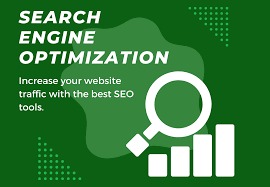Introduction
In the vast landscape of the internet, where countless websites compete for attention, mastering the art of Search Engine Optimization (SEO) is indispensable for businesses and individuals alike. SEO isn’t just about ranking high on search engine results pages (SERPs), it’s about enhancing online visibility, driving organic traffic, and ultimately, achieving business objectives. However, with search engine algorithms constantly evolving, the strategies that once guaranteed success may now be obsolete. To thrive in today’s digital ecosystem, it’s crucial to synergize various SEO tactics effectively.
Understanding the Foundation: Keywords and Content
Keywords are the cornerstone of SEO. They act as signposts that guide search engine crawlers and connect users with relevant content. However, the keyword landscape has evolved from simple keyword stuffing to semantic search and user intent optimization. Today, effective keyword research involves understanding not only the search volume and competition but also the context and intent behind user queries.
Content remains king in the realm of SEO. High-quality, relevant content not only attracts users but also earns backlinks and boosts search rankings. By creating comprehensive, informative, and engaging content, businesses can establish authority in their niche and build trust with their audience. Content diversity is also crucial, including blog posts, videos, infographics, podcasts, and more, catering to different preferences and consumption habits.

Technical Optimization: The Backbone of SEO
Behind every successful SEO strategy lies a solid technical foundation. Technical optimization ensures that search engines can crawl, index, and understand your website efficiently. This includes optimizing site structure, improving page speed, implementing schema markup for rich snippets, fixing broken links, and ensuring mobile-friendliness.
Moreover, optimizing for user experience (UX) is paramount. A seamless UX not only delights visitors but also signals to search engines that your website is trustworthy and valuable. Factors such as intuitive navigation, clear calls-to-action, and mobile responsiveness contribute to a positive UX, which in turn can lead to higher search rankings and lower bounce rates.
Off-Page Strategies: Building Authority and Trust
Off-page SEO focuses on establishing your website’s authority and credibility across the web. Central to this is link building, which involves acquiring backlinks from reputable websites. Quality backlinks serve as votes of confidence, signaling to search engines that your content is valuable and worthy of ranking higher. However, not all links are created equal; relevance, authority, and diversity of linking domains are essential considerations.
Social media also plays a crucial role in off-page SEO. While social signals may not directly impact search rankings, social media platforms serve as channels for content distribution, amplifying your reach and driving traffic back to your website. Engaging with your audience on social media can also foster brand loyalty and encourage user-generated content, further enhancing your online presence.

The Power of Analytics and Iteration
In the dynamic landscape of SEO, data-driven decision-making is key to success. By leveraging analytics tools such as Google Analytics and Google Search Console, businesses can gain insights into their website performance, user behavior, and search visibility. Monitoring key metrics such as organic traffic, conversion rates, and keyword rankings allows for informed optimization strategies.
Furthermore, SEO is an iterative process. Continuously monitoring performance, experimenting with new tactics, and adapting to algorithm changes are essential for staying ahead of the curve. A culture of experimentation and learning enables businesses to identify what works best for their audience and adjust their strategies accordingly.
Conclusion
Synergizing SEO tactics involves a holistic approach that encompasses keyword research, content creation, technical optimization, off-page strategies, and data analysis. By integrating these elements seamlessly, businesses can enhance their online visibility, attract organic traffic, and achieve their marketing objectives. In an ever-evolving digital landscape, staying agile and adaptive is key to maintaining a competitive edge and maximizing ROI in SEO efforts.
 Clear My Certification All Certification Exam Answers
Clear My Certification All Certification Exam Answers



